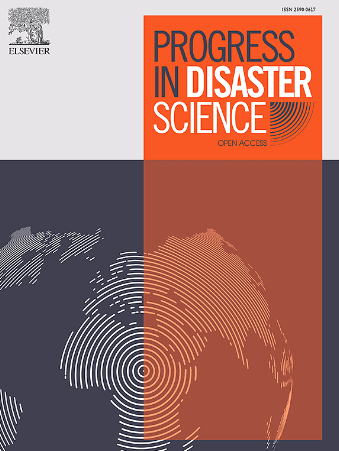From 2D to 3D: Flood risk communication in a flood-prone neighborhood via dynamic, isometric street views
IF 3.8
Q3 ENVIRONMENTAL SCIENCES
引用次数: 0
Abstract
There is increasing evidence that climate change will lead to greater and more frequent extreme weather events, thus underscoring the importance of effectively communicating risks of record storm surges in coastal communities. This article reviews why risk communication often fails to convey the nature and risk of storm surge among the public and highlights the limitations of conventional (two-dimensional) storm surge flood maps. The research explores the potential of dynamic street-level, augmented scenes to increase the tangibility of these risks and foster a greater sense of agency among the public. The study focused on Sunset Park, a coastal community in southwest Brooklyn that is vulnerable to storm surges and flooding. Two different representations of flooding corresponding to a category three hurricane scenario were prepared: (1) a conventional two-dimensional flood map (“2D” control group) and (2) a, dynamic, street view simulation (“3D” test group). The street view simulations were found to be (1) more effective in conveying the magnitude of flooding and evacuation challenges, (2) easier to use for judging flood water depth (even without a flood depth legend), (3) capable of generating stronger emotional responses, and (4) perceived as more authoritative.in nature.
从2D到3D:通过动态、等距街景在洪水易发社区进行洪水风险沟通
越来越多的证据表明,气候变化将导致更大、更频繁的极端天气事件,从而强调了在沿海社区有效宣传创纪录风暴潮风险的重要性。这篇文章回顾了为什么风险沟通经常不能在公众中传达风暴潮的性质和风险,并强调了传统(二维)风暴潮洪水地图的局限性。该研究探索了动态的街道级增强场景的潜力,以增加这些风险的可感知性,并在公众中培养更大的代理意识。这项研究的重点是日落公园,这是布鲁克林西南部的一个沿海社区,容易受到风暴潮和洪水的影响。针对三级飓风情景,研究人员准备了两种不同的洪水表现形式:(1)传统的二维洪水地图(“2D”对照组)和(2)动态街景模拟(“3D”测试组)。研究发现,街景模拟(1)在传达洪水和疏散挑战的程度方面更有效,(2)更容易用于判断洪水深度(即使没有洪水深度图例),(3)能够产生更强烈的情绪反应,(4)被认为更权威。在自然界中。
本文章由计算机程序翻译,如有差异,请以英文原文为准。
求助全文
约1分钟内获得全文
求助全文
来源期刊

Progress in Disaster Science
Social Sciences-Safety Research
CiteScore
14.60
自引率
3.20%
发文量
51
审稿时长
12 weeks
期刊介绍:
Progress in Disaster Science is a Gold Open Access journal focusing on integrating research and policy in disaster research, and publishes original research papers and invited viewpoint articles on disaster risk reduction; response; emergency management and recovery.
A key part of the Journal's Publication output will see key experts invited to assess and comment on the current trends in disaster research, as well as highlight key papers.
 求助内容:
求助内容: 应助结果提醒方式:
应助结果提醒方式:


